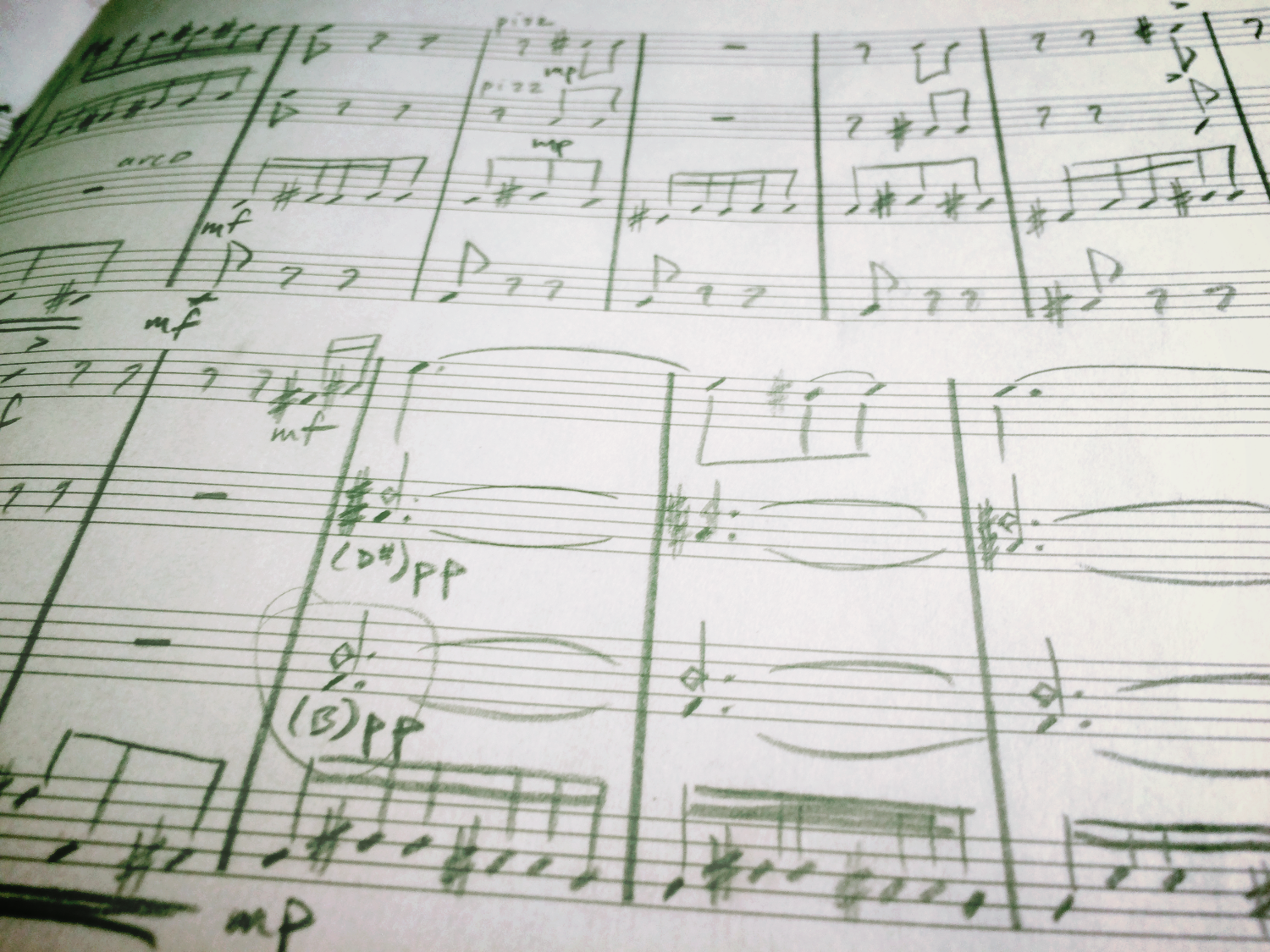

Chamber
Works
Vibraphone / Violin
Anchor was commissioned by my good friend Adam Schwartz for a recital in September 2014. It revolves around a central idea: the facade vs. the real. The vibraphone is the facade self, continuously changing and often completely at odds with the real. The violin is the real self, peeking through and never changing. Where the facade must constantly be in flux, the real is an anchor to which it can always return.
Harp / Cajon, Congas, Bongos, SD, BD, Vibraphone, Crotales, Susp. Cym., Marimba, Log Drum
Autumnfall was inspired by the vibrant New England autumn of 2014, which got me thinking of the cycles of life, death, and resurrection. Each movement corresponds to a stage in the natural year. The first movement, 'Orange Flesh,' is the leaves green and vibrant and living and dancing, as well as the deep contentment of a life at the threshold of death. Thus, the percussion is that of skin against skin (or in some cases, wood) in a quirky, often off-centered groove, while the harp juxtaposes abstract rhythms and harmonies as the wind that tickles the leaves on a lazy summer afternoon. The second movement is a shimmering weightlessness of metallic lullaby as the leaves turn their colors and fall to the ground. It is an endless cascade of shades, the sonic counterpart to the visual vibrancy of autumn. The third is stark and brittle yet lively and thrashing - the hardness of the wood against the softness of the beautiful frigid winter hiding the life within. While both instruments dance together with the energy stored for rebirth, the rich warmth of the marimba against the mellowness of the harp evoke the naked trees against a bleak sky, their upturned branches wooden cries for the spring to return. Autumnfall was commissioned by Duo Harpwerk.
Violin
before/behind was written after my first visit to the Guggenheim Museum in New York; the main exhibition was the work of John Chamberlain, a 20th century American sculptor whose medium was brightly colored scrap metal arranged in often towering precarious-yet-grounded abstract designs. I was fascinated by these works, especially at the way they changed as one walked around them, as if they were stationary mobiles, causing the world to circle them instead of the other way around. The Guggenheim itself is famous for its enormous 6-story main hall consisting of a grand spiral ramp, allowing for enormous exhibitions to be viewed in one continuous sweep. It was here that Chamberlain was placed; the very beginning of his career at the bottom of the ramp, and his last works at the top. Thus, the upward spiral followed Chamberlain’s career chronologically, yet I was equally stunned as I made my way back down the ramp, and was able to see all of it in reverse. It dawned on me how incredibly different my experience would have been had I started at the top and worked my way down. These ideas informed the concept of before/behind. This piece is an exploration of context, perception, and the manipulation of the two. An “object” is presented at the outset. The object itself does not change, but the piece places it in multiple contexts, allowing multiple unique perspectives and opinions of it. In the sense that watching the Chamberlain exhibition unfold forward in time altered my experience of it in reverse, so too is the overall attitude toward the object transformed from beginning to end.
◄
1 / 1
►































